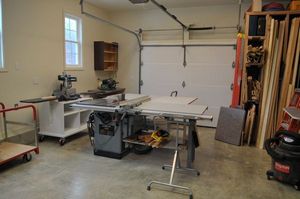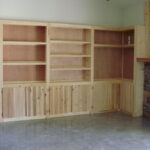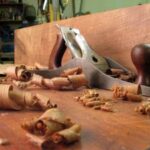Woodworking can be a rewarding and challenging past time that for some can become more than just an obsession, and turn into a profession. But for those who aren’t satisfied with the beginning woodworking projects but don’t quite have the skill for more advanced woodworking tasks, there are plenty of novice woodworking projects that can suit anyone’s woodworking skillset. If you’re looking to improve your woodworking skills, but you already know the basics, use these tips and techniques for the novice woodworker and learn the top five secrets of the professional woodworker.
Using a Feather Board
A feather board is used to make sure that the piece of material you are cutting against a fence stays tight against the blade during the cut. This prevents you from getting your hands close to a moving saw blade. Whether you create your own feather board from scratch or you buy one from the store, be sure that when you’re cutting any skinny and tall materials against the fence, a feather board will safely prevent tear out and misaligned dado cuts.
Preventing MDF Splits
In most furniture woodworking projects that use MDF board, woodscrews are attached to the corners of MDF board to hold the edges in place. MDF board has the tendency to split open when too much pressure is applied to the screws. Use a straight edged screw instead of a tapered edge screw to prevent split ends on your MDF board projects.
Create the Perfect Chamfer
Cutting chamfers on materials for table legs and other decorative pieces of furniture can be difficult if you don’t have the right tools and knowledge to cut the chamfer perfectly to prevent leaving burn marks or tear out of the grain. To get a perfect chamfer on your finished materials, set up your table saw with a sanding disk and turn the crank to a 45 degree angle. Use a piece of scrap material cut at a 45 degree angle on its edge and clamp it to the fence on the saw. Simply run the material to be chamfered across the sanding disk using a miter gauge for a perfectly smooth chamfer every time.
Staining End Grain
End grain on wood soaks up stain like a thirsty camel at an oasis. This can make the end grain of any project seem much darker than the rest of the stain. To keep colors consistent throughout the woodworking project, use a gel-based stain to prevent colors from ending up darker on the end of the wood grain.
Drill Press Fence
For more stable drilling on a drill press, a fence can be used to keep material in place. Most woodworkers simply clamp a piece of scrap material to the drill press table to keep the material stable. But this can be awkward to maneuver and keep in the correct position without a lot of trial and error adjustments. Cut a permanent fence that reaches the length of your drill press table and secure one side of the fence to the table’s far corner. This will allow the fence to swing in and out away from the drill bit and be easily clamped in perfect position with just one clamp.
More Fantastic Home Improvement Articles by Eric Brennan
4 Easy Steps to a New Window Screen
Removing Paint from Difficult Surfaces
Build your Own Shish Kebab Pit






